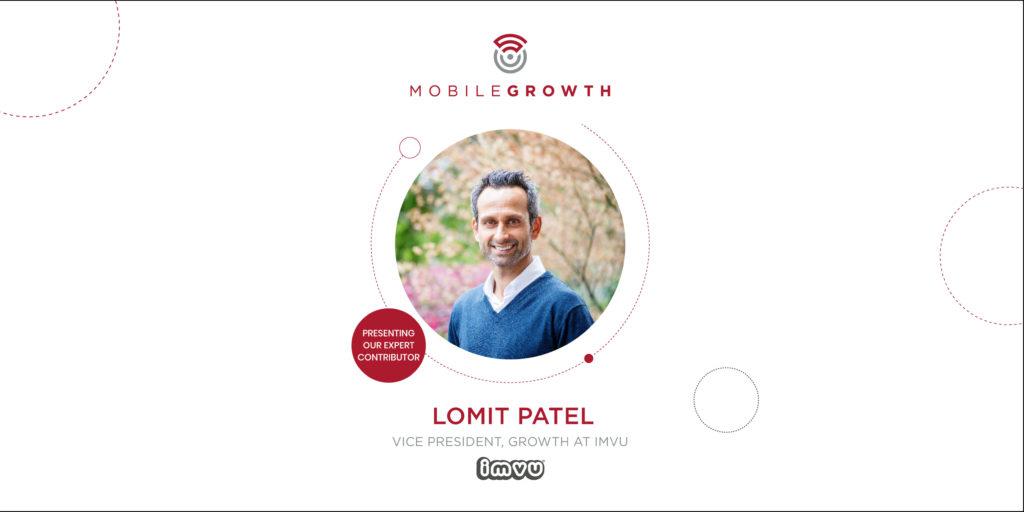The Facebook and Google Universal App Campaigns duopoly have long been great sources of new customers, but the challenge has always been scaling your acquisition efforts on these platforms. Typically, marketing budgets over $200,000 a month required using a third-party AdTech tool to help manage the complexities of those campaigns with multiple audiences, budgets, bids, geographies, and creative strategies.
In 2018, both Facebook and Google Universal App Campaigns machine learning (ML) algorithms significantly improved the ability for advertisers to manage and scale up their campaigns based on success goals, with downstream optimizations becoming more easily managed using their native tools. The benefit is that now advertisers only have to focus on managing a few key levers like choosing the right optimization goals (CPI, CPA, ROAS), budgets, bids, and creative; leaving the time-consuming complex campaign optimization tasks in the hands of the powerful ML capabilities of Facebook and Google Universal App Campaigns.
In 2019, I envision Facebook and Google Universal App Campaigns algorithms getting even smarter with more accurate predictions for hitting key performance indicators (CPI, CPA, ROAS and LTV) and serving better personalized creative formats from incremental collection of data. This virtuous cycle will result in shifting even more budget toward the duopoly, which would impact the competitor’s ability to continue to invest significant R&D budget into further improving its own ML capabilities. What is still unknown is how much first-party data advertisers will need to continue to share with Facebook and Google Universal App Campaigns as these algorithms get better at predicting user intent with all the data signals they collect about users.
In the meantime, the constant remains: scaling up your Facebook and Google Universal App Campaigns and leveraging each platform’s current out-of-the-box user acquisition solutions.
Scaling Up Facebook & Google
Our team at IMVU has invested a lot of budget into tested new audiences, new geographies, multiple goals and new creatives. Here are five best practices that enabled us to successfully scale up user acquisition and engagement across both Facebook and Google.
1. Pick the Right Optimization Goals
There are currently two key post-install optimization goals like “App Events Optimization” (purchases or registrations) and “Value Optimization” (revenue or ROAS). You want to identify the type of customer you’re targeting with your campaign and assign a value to each conversion (new user registrations or in-app actions such as purchases). Ultimately, the more data events you pass back based on your user funnel the better these platforms can help you target the right users.
As we have dual goals of increasing unique and first-time purchasers, along with maximizing our return on ad spend, we knew this was done by prospecting for new customers while simultaneously encouraging our current customers to re-engage with the platform. We use different optimization goals for delivery based on the user stage of the funnel. For example, lower in the funnel, we optimize for purchase conversions, but higher in the funnel, we may optimize for clicks or even daily unique reach.
2. Segment Your Audiences
Lookalike audiences are definitely going to be your best segments to target based on sharing data on your most valuable paying players to match and find similar audiences. It’s best to start with a 1% match and then scale up slowly in increments of 1%. to find the sweet spot for your campaign. At IMVU, we pass back both new payers and revenue data back to these platforms.
User targeting based off of Facebook’s lookalike modeling considers countless user specific, social, engagement, and probabilistic attributes to produce an incredibly precise prediction of similarly valuable users. Ultimately, the combination of these approaches allows Facebook to not only be effective at driving results, but to continuously be improving over time.
3. Utilize the Right Diverse Creative Mix
The creative is the single biggest lever to impact your campaign performance. They say you can’t fix stupid. Well, you can’t fix awful creatives with all the AI in the world. Running a variety of assets will help these platforms personalize your ads for as many ad placements as are available.
The better the click-through rate on creative, the less you need to pay to win competitive bids in either of the major marketplaces. We used a variety of different ad creative orientation and sizes, formats (images and videos) along with copy variations (up to four) to help us maximize our reach and let them do the work to optimize towards the best performing creatives.
Think of the creative as fuel to the flames, but keep in mind it needs to be revised and refreshed at least once or twice per month in order to avoid fatigue or saturation.
It’s important to figure out how often to refresh by looking at your creative performance data. At IMVU, based on our data, we refresh our creative two to three times a month to avoid burnout.
In our experience, video performed much better than static images for new user acquisition. But the opposite turns out to be true for our retargeting campaigns, where static images far outperformed video. Generally, we recommend testing all the available creative format types and sizes to enable Facebook and Google Universal App Campaigns to figure out what works best. However, when testing out specific approaches or creatives, we may add separated placements (for example Instagram Stories or Facebook Stories or separate Universal App Campaigns for video and display).
In our testing, we were surprised to learn that using jargon or acronyms relevant to our audience in the copy helped improve click-through rates. One of the biggest advantages of AI/ML-based campaign optimization is the relatively low cost of testing a wide variety of creatives; we are almost always astonished by the clear trends that emerge in the best performing creative.
4. Set the Right Bids and Budgets
One important thing we learned is that these platforms need around 50 purchase events per day for a few weeks before it can fully optimize well towards your ideal performance goals. Therefore, it’s important to be patient and not tinker too much with different bids to give their algorithms enough time and data to work. You should consider front loading the test budget to accelerate the training period for the AI as these platforms get smarter faster with more data (knowing it would take 2-4 weeks for the AI to start hitting your optimal goals).
Facebook has implemented machine learning extensively for conversion optimization as well as user targeting with the goal of maximizing its effective CPM payout while concurrently achieving advertiser goals. To improve conversion optimization, Facebook’s algorithm modulates a slew of variables, from time and frequency to creative placement and affinity to perform a desired action. User targeting based off of Facebook’s lookalike modeling considers countless user specific, social, engagement, and probabilistic attributes to produce an incredibly precise prediction of similarly valuable users. Ultimately, the combination of these approaches allows Facebook to not only be effective at driving results faster compared to Google Universal App Campaigns, but to continuously improve over time.
Google, on the other hand, uses complex machine learning models to drive success for advertisers. Most marketers familiar with Google are also deeply familiar with Conversion Optimizer, its automated bid strategy that focuses on maximizing conversions according to advertiser goals. Conversion Optimizer has been around for nearly a decade and has evolved gradually over the years, most recently becoming Target CPA bidding (tCPA). Though Google Universal App Campaigns rely on machine learning just as much as Facebook ads do, Google takes a different approach to training its optimization algorithms for each advertiser. Google starts more broadly, which takes more time than Facebook to optimize and hit your ideal performance goals.
5. Automation Using Intelligent Machines
No doubt Facebook and Google Universal App Campaigns will continue to provide compelling out-of-the-box user acquisition (UA) solutions. But think about it, if everyone has the same out-of-the-box solution, how will you ever be able to outperform other competitors on these platforms?
At IMVU, we leverage an intelligent machine like Athena Prime, orchestrating complex campaigns across and among key marketing platforms like Facebook and Google Universal App Campaigns–dynamically allocating budgets, pruning creatives, surfacing insights, and taking actions autonomously 24/7/365. Intelligent machines hold the potential to drive great performance with a far more efficient, hands-off management approach powered by AI. Control your levers, focus on creative and strategy, and turn the drudgery and math over to the machines to get data-driven results far beyond manual capabilities.
Now, Some Important Things to Avoid
- Don’t develop only narrow concepts for your creatives. Explore and test liberally. Invest in learning.
- Don’t make large bid or budget adjustments based on short-term trends. These are fluid, bidding marketplaces that tend to smooth out over time. But short-term bid pressures shouldn’t get over weighted in decision-making.
- Don’t just focus on your best performing campaigns or ads. The difference between success and failure is a relentless devotion to exploring, learning, and testing. I can’t stress that enough.
- Don’t start and stop campaigns–it’s best to keep things running and make minor adjustments along the path.
- Don’t be timid. Aggressive bid caps can severely restrict your reach, especially early in campaign lifecycles.
- Don’t create too many overlapping audiences.
- Don’t overestimate the impact of retargeting–instead, you should measure true retargeting incremental lift.
IMVU Results
Our performance continues to remain strong by leveraging ML capabilities and levers. Split tests are a great way of continuously testing different variables across all the different variables. We scaled up spend by 300% on these platforms in the first month, and have been able to cost-effectively grow the spend month-over-month. As we transitioned from our manual operations to automated cross channel optimization, using an intelligent machine AI machine to control those levers, we saw even more positive trends in our KPIs:
- Unique Payers Growth – 700%
- ROI Growth – 59%
- CPA Improvement – 75%
Since then we have been able to increase our month-over-month spend, while continuing to see consistent improvements in our KPIs. These KPIs are not only showing YoY growth similar to our first month improvement (as the previous periods in the last year also took a manual approach), but we are continuing to see improvements in our month-over-month improvement in our ROI and CPA at 8% on average, while growing our unique payers at 11% on average.
Perhaps more importantly, we’ve achieved these results while spending far less time fiddling with bids and manual optimizations. Taking the time savings into account, the ROI is even higher; it allows us to spend more time on creative and strategy where we can best impact our KPIs.
Final Thoughts
Growth doesn’t come easy and let this be your roadmap to amazing results with the duopoly. It’s important to make sure you have the right setup in place, with goals and data being passed back into these platforms. While it’s easy to scoff at the lack of “control” with today’s campaign optimization technologies, both these platforms hold the potential to drive great performance with a far more efficient, hands-off management approach powered by AI. To turbo charge your performance, consider working with, or building, an intelligent machine to help you automate the key levers under your control like budgets and bids, while investing more budget into creative resources, to get data-driven results far beyond manual capabilities.
This article first appeared on Mobile Growth Summit.





